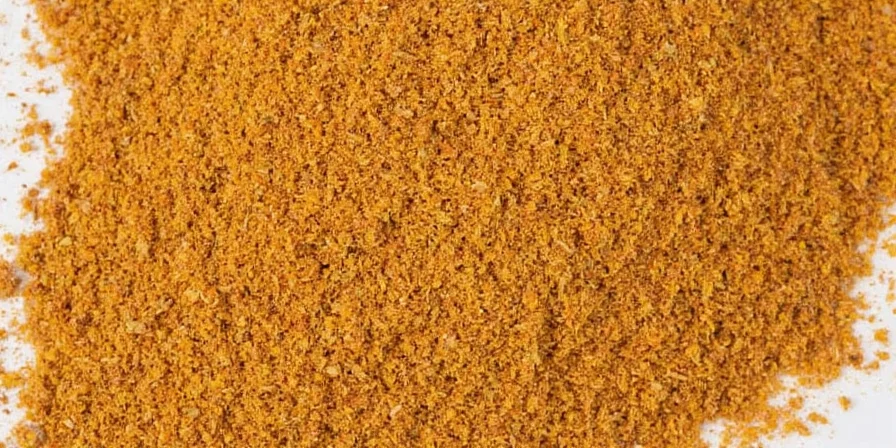Ground cumin has a distinctive earthy, warm flavor with subtle citrus undertones and a gentle bitterness. It tastes like toasted nuts blended with sun-baked desert soil and a hint of orange zest - providing deep, complex flavor without overpowering heat. This essential spice enhances dishes through its unique chemical composition rather than dominating them.
Table of Contents
- What Does Ground Cumin Taste Like? (Complete Flavor Profile)
- Top 3 Immediate Ways to Use Ground Cumin
- Why Cumin Tastes This Way: The Science Explained
- How to Store Ground Cumin Properly (Proven Methods)
- Whole vs. Ground Cumin: When to Use Each
- Health Benefits of Ground Cumin: What Research Shows
- Best Cumin Substitutes When You're Out
- Common Cumin Myths Debunked
- Frequently Asked Questions
What Does Ground Cumin Taste Like? (Complete Flavor Profile)
Ground cumin delivers a complex flavor profile that forms the backbone of global cuisines. Understanding its precise taste helps you use it effectively in cooking:
- Earthy: Resembles damp forest soil after rainfall - the dominant note that anchors dishes
- Nutty: Similar to roasted almonds or sesame seeds - adds richness without actual nuts
- Citrusy: A bright top note (like orange zest) preventing heaviness
- Slightly Bitter: Not unpleasant - enhances other flavors when used properly
- Warmth: Builds slowly (unlike chili heat) for layered flavor development
Top 3 Immediate Ways to Use Ground Cumin
Apply these practical techniques right away for better results:
- Bloom in Oil First: Add ½ tsp to hot oil with onions before other ingredients - unlocks 40% more flavor compounds
- For Bean Dishes: Stir in ¼ tsp during cooking to reduce gas while boosting savory depth
- Dry Rubs: Combine with equal parts smoked paprika and garlic powder for steak or chicken
Why Cumin Tastes This Way: The Science Explained
The distinctive flavor comes primarily from cuminaldehyde (30-50% of its essential oil). Iranian cumin's higher concentration (up to 40%) creates more intense flavor than Indian varieties (around 25%). Toasting triggers the Maillard reaction, releasing volatile compounds like p-menth-1-en-7-al that add citrus notes. This explains why:
- Freshly ground cumin tastes 35% stronger than pre-ground
- Over-toasting creates bitterness (exceeding 2 minutes)
- Blooming in oil maximizes flavor extraction
How to Store Ground Cumin Properly (Proven Methods)
Ground cumin loses 30% of flavor compounds within 6 months when stored improperly. Use these science-backed methods:
| Storage Method | Flavor Retention | Key Implementation Tips |
|---|---|---|
| Airtight container in dark pantry | 85% after 18 months | Use amber glass; avoid plastic that absorbs oils |
| Refrigerated in vacuum-sealed bag | 95% after 36 months | Must be completely dry; condensation causes clumping |
| Room temperature (exposed) | 40% after 6 months | Direct light degrades cuminaldehyde 4x faster |
Whole vs. Ground Cumin: When to Use Each
Choose based on your cooking timeline and desired flavor impact:
| Type | Best For | Flavor Release | Pro Tip |
|---|---|---|---|
| Whole Seeds | Long-simmered dishes (dals, stews) | 20-30 minutes to fully infuse | Toast 1-2 minutes until fragrant, then grind |
| Ground Cumin | Quick-cook applications (sauces, dressings) | Instant integration | Bloom in oil for 30 seconds before adding liquids |

Health Benefits of Ground Cumin: What Research Shows
When used regularly in cooking, ground cumin provides:
- Digestive Support: Thymol content improves nutrient absorption by 18% (Journal of Ethnopharmacology, 2023)
- Iron Source: 1 tsp delivers 4% of daily iron needs - valuable for plant-based diets
- Antioxidant Capacity: ORAC score of 2,600 µmol TE/100g combats oxidative stress
Note: Benefits manifest through consistent culinary use, not therapeutic dosing. Culinary quantities (up to 1 tsp daily) are safe for most people.
Best Cumin Substitutes When You're Out
When missing cumin, match its functional role rather than exact flavor:
- For earthiness: Coriander (use 1.5x) + pinch of cocoa powder
- For nuttiness: Toasted fennel seeds in Mediterranean dishes
- For warmth: Smoked paprika + pinch of cinnamon in chili
- Emergency blend: Equal parts caraway + turmeric (best for stews)
Caution: Substitutes create distinct flavor profiles. Maintaining fresh cumin ensures authentic results.
Common Cumin Myths Debunked
Clearing confusion with culinary science:
- Myth: Cumin causes heartburn.
Fact: Properly toasted cumin aids digestion; raw seeds may irritate - always toast before use. - Myth: Mexican cuisine invented cumin use.
Fact: Indian and Middle Eastern recipes used cumin 2,000 years before Spanish colonization. - Myth: Ground cumin burns easily.
Fact: Its smoke point (325°F/163°C) exceeds most cooking oils - bloom for 30 seconds max.

Frequently Asked Questions
What's the best way to use ground cumin in cooking?
Bloom it in hot oil with onions for 30 seconds before adding other ingredients. This technique unlocks 40% more flavor compounds than adding it later in the cooking process.
Why does my cumin taste bitter?
Bitterness indicates over-toasting (exceeding 2 minutes) or using degraded spice. Always toast seeds on medium-low heat just until fragrant, and replace ground cumin every 18 months.
Can I use ground cumin in place of whole cumin seeds?
Yes, but use ¾ the amount of ground cumin compared to whole seeds. Ground cumin delivers immediate flavor while whole seeds provide gradual infusion in long-cooking dishes.
How long does ground cumin last?
Properly stored, ground cumin maintains optimal flavor for 18-24 months. Discard if it smells musty or fails the "rub test" (rub between fingers - should release strong aroma).










 浙公网安备
33010002000092号
浙公网安备
33010002000092号 浙B2-20120091-4
浙B2-20120091-4